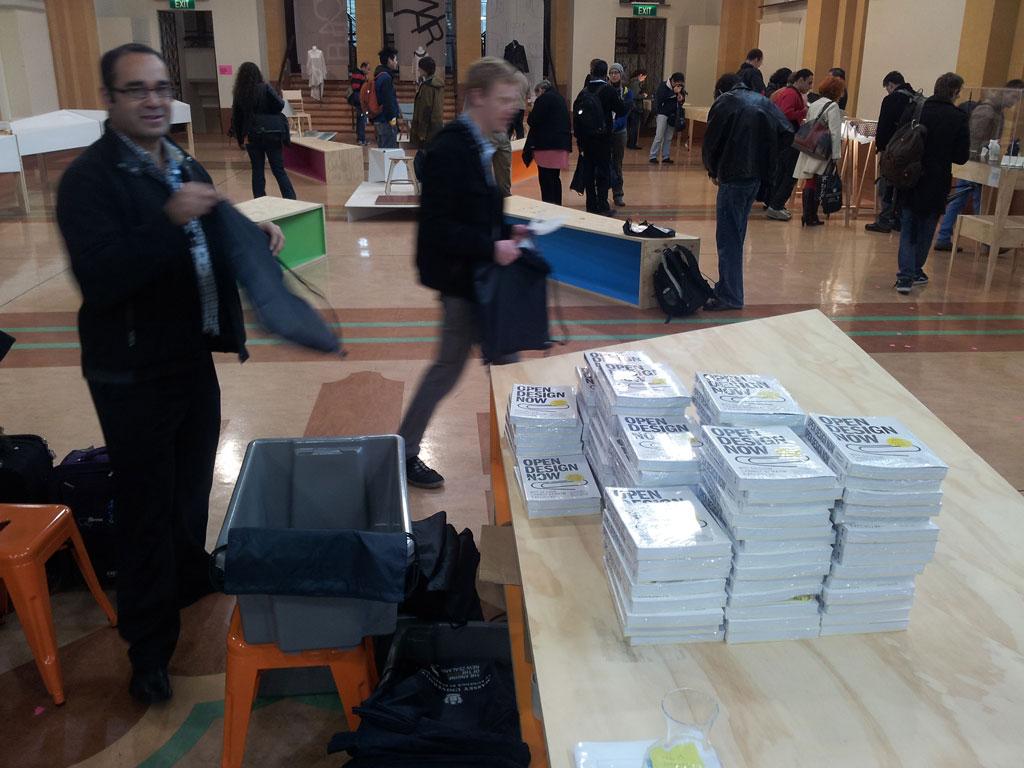This year, the annual conference of the international Fablab community on implications and implementations of digital fabrication, Fab8, was held at the Massey University in Wellington, New Zealand. The worldwide Fablab community is growing rapidly. There are now about 145 Fablabs and this number is doubling every two years. In New Zealand, the Mãori culture is very strongly interwoven in society. No wonder the opening ceremony of Fab8 begun with a welcome talk ('Mihi Whakatau') in Mãori language, followed by a special song, and then the greeting ritual - nose on nose with each other.
To my pleasure, 'open design' was an important item at this year's conference. MIT even bought a copy of the book 'Open design Now' for each visitor's welcome package! Beside the lab reports there was a topical talk each day, and I was happy to give a presentation together with Deanna Herst, Course Director at the Willem de Kooning Academy Rotterdam, about open design. People were very interested in the implications of open design, as well as in true knowledge sharing on an international basis.
At the Amsterdam lab report, I was proposing website instances for every lab, since the Fablab Amsterdam website has proven to be very popular. The idea behind these instances is to provide any lab with a full documentation and a reservation system that allows true knowledge sharing on an international basis. It also gives the Fablab world a nice visual identity that will reflect what this movement is all about. So far, Ethiopia, South Arabia, Israel, Eindhoven, Grenoble and Leon signed up.
On the academic symposium there was, at least in my view, a surprising contribution by 'Michael Hopmeier' about Fablabs and security. A possible thread that could appear in the Fablab world would be people using the Fablab methodology to construct nuclear weapons. Chances are there for mass destruction and nuclear mayhem, according to Hopmeier.
The symposium was ending as always with the Fab Academy graduation, and I am very proud all our students graduated: Astrid van Roij-Lubsen, Bas Withagen, Cynthia Mavros, Thomas Hopman, Massimo Menichinelli and Anu Määtä.
On the last day, the conference was closed by the amazing flying objects contest. The community was asked to construct a flying object that at least can fly for at least 30 seconds. Many beautiful and crazy objects have been presented, and guess who won: Jens Dyvik with his hectocopter, hoovering for minutes at about two meters from the ground. A spectacular ending of a very successful Fablab conference. Many thanks for the organizers of the Massey Institute and MIT, they did a teriffic job!


